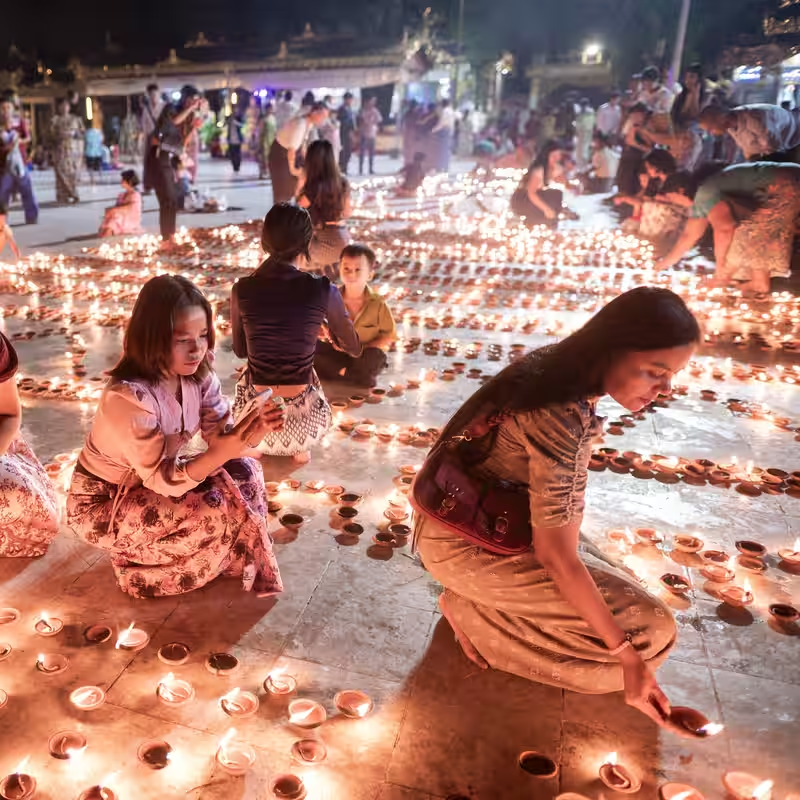In one of the deadliest attacks since the 2021 coup, Myanmar’s military junta launched a paraglider bombing on a crowded Buddhist festival in the Sagaing region on Tuesday, killing at least 42 people—including women and children—and wounding scores more. Witnesses and the civilian National Unity Government (NUG) say the strike deliberately targeted both a religious gathering and peaceful anti-junta protesters who had joined the event.
What Happened in Chaung-U?
The bombing occurred during the annual Thadingyut Festival in Chaung-U township, a time when Buddhists celebrate the end of the rainy season with lights, prayers, and community gatherings. But this year, the festival also doubled as a quiet act of resistance: locals had been flying the red-and-gold flag of the NUG and chanting slogans against military rule.
According to survivors, two paragliders—modified to carry explosives—drifted silently over the crowd before detonating mid-air. The blasts tore through food stalls, prayer tents, and a temporary stage where monks were giving blessings.
“There was no warning,” said Ma Thet, a 34-year-old schoolteacher who lost her younger brother in the attack. “One moment we were lighting candles for peace. The next, everything was fire and screaming.”
Why the Myanmar military Targeted a Religious Event
While the junta has not officially claimed responsibility, multiple sources—including local resistance groups and international monitors—confirm the paraglider bombs are a signature tactic of the Tatmadaw (Myanmar’s armed forces). Over the past year, similar devices have been used in airstrikes on schools, clinics, and villages suspected of supporting opposition forces.
Analysts believe the Chaung-U attack was both punitive and strategic: Sagaing has become a stronghold of civilian resistance, with widespread boycotts of military institutions and active People’s Defense Forces (PDFs) operating in the hills.
“They’re sending a message: even your sacred spaces aren’t safe,” said Dr. Aung Kyaw Moe, human rights advisor to the NUG. “This wasn’t collateral damage—it was terror by design.”
Casualties and Aftermath
| Category | Confirmed | Estimated Total |
|---|---|---|
| Fatalities | 42 | 50+ |
| Injured | 78 | 100+ |
| Children among dead | 9 | 12 |
| Monks injured or killed | 5 | 7 |
Hospitals in nearby Mandalay were overwhelmed within hours. With roads blocked by military checkpoints, many victims bled out before reaching care.
International Outcry Grows
The United Nations called the attack “a possible war crime,” while the U.S. State Department condemned the “brutal targeting of civilians during a religious observance.” ASEAN, long criticized for its inaction on Myanmar, issued a rare statement expressing “deep concern.”
Still, no concrete sanctions or military intervention appear imminent. Meanwhile, resistance groups say the bombing has only strengthened local resolve.
What’s Next for Myanmar?
As the conflict enters its fifth year, the junta’s grip on urban centers remains firm—but its legitimacy continues to erode. With over 3,000 civilians killed since the coup and millions displaced, the Chaung-U bombing may become a turning point in global perception.
“They think fear will silence us,” said a local PDF commander who asked to be identified only as “Bo Min.” “But today, more families are joining the fight.”




